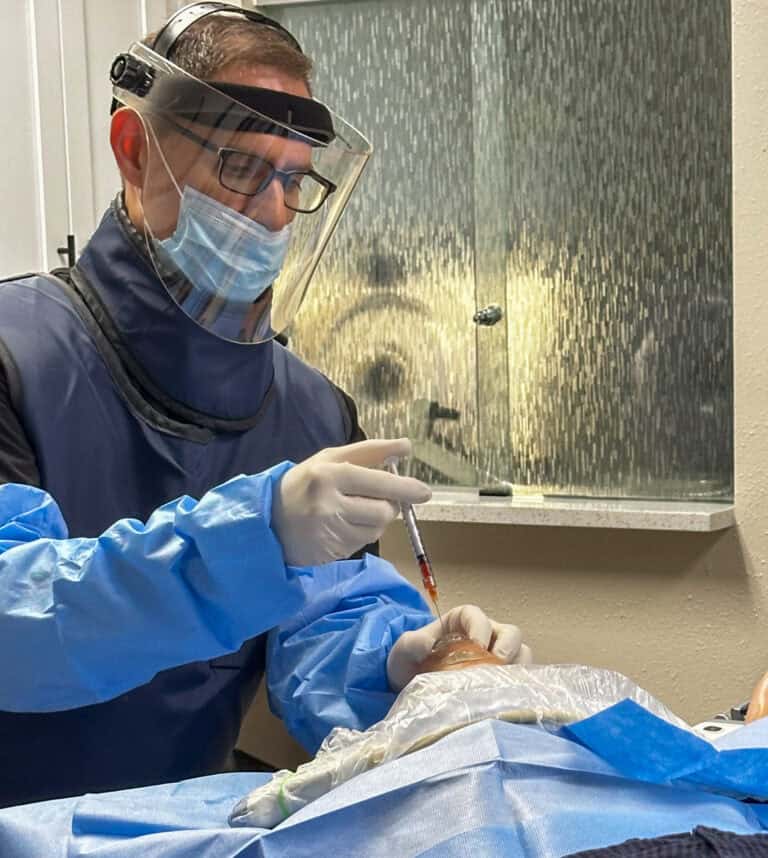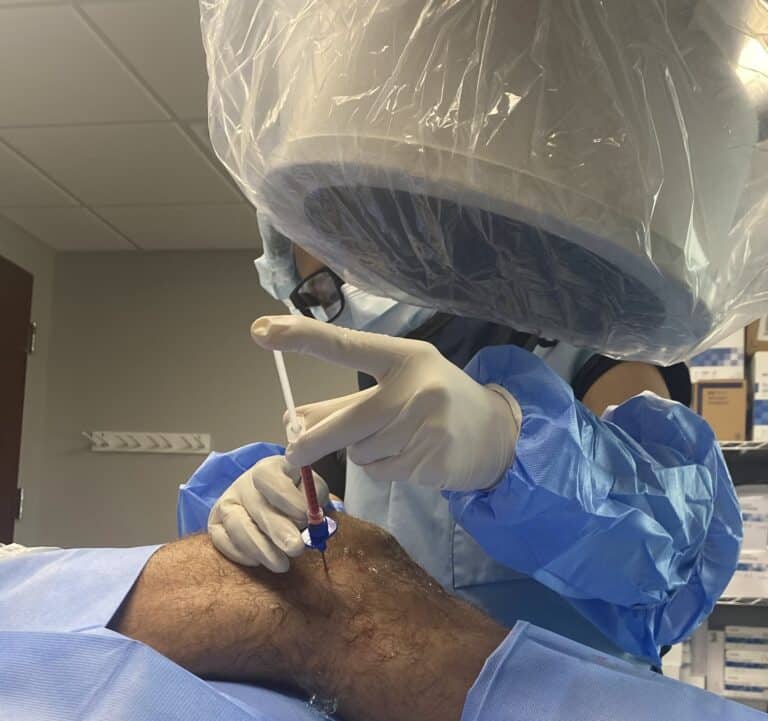In a 2019 national survey, chronic pain was reported to affect 50.2 million adults. In fact, 20.5% of the population reports feeling pain on most days or every day.(1) Also of note, in 2020 the CDC reported that more than 34 million Americans have diabetes.(2)
Our country has a huge prevalence of people experiencing chronic pain but also suffering from metabolic disease. However, the most common conventional orthopedic treatment for pain is corticosteroid injections.
Why does this matter? Let’s dive into learning what corticosteroids are, how they affect the body, and why this matters for diabetic patients seeking pain relief.
What is a corticosteroid?
A corticosteroid is a substance that is used to decrease inflammation. So, in the realm of corticosteroids, we have the naturally occurring corticosteroids in our body, and then we also have the synthetic type of anti-inflammatory medications that are injected into the body. Some examples of steroid medications are Depo-Medrol, betamethasone, dexamethasone, triamcinolone, methylprednisolone, Celestone, and Kenalog.
These medications are often injected to treat orthopedic conditions, like shoulder pain in the rotator cuff, knee pain, hip pain, and many others. However, the biggest difference between the naturally occurring steroids in our body and the injected medications is the dosage.
The body naturally uses tiny nanogram doses, while injected steroids are milligram doses. Chris Centeno, MD writes about this discrepancy, “Doctors inject MILLIgrams or about 100,000 to 1,000,000 times more [than the body naturally uses]! Why? There is no medical or scientific rationale, this is just tradition.” (3)
What does a corticosteroid do inside the body?
When steroid medications are injected inside the body they have a local effect on the tissue it is injected into (eg, the rotator cuff muscles/tendons, or the cartilage of the knee), but they also have a global and systemic effect.
The local effects are intended to be pain relief, but the huge doses doctors inject actually have an “injury” effect on the local tissues. Since 1951 studies have been finding how harmful steroids are to these local tissues. In fact, a recent study shows that patients who got corticosteroids in their knees had accelerated worsening in their knee arthritis.(3,4)
The global, or systemic, effects of corticosteroids mimic a natural response your body has in cases of a stress response, and immune response, and/or an inflammation-reduction response. Another notable effect of naturally-occurring corticosteroids is blood sugar spikes.
As mentioned above, therapeutically injected corticosteroids are in doses a million times more than the body releases in these natural physiologic responses, and patients are often treated with several corticosteroid injections in sequence.
The problem with this systemic effect in such high doses is it can have negative effects on tissue repair, with evidence showing it can lead to early osteoporosis, increased cartilage thinning, and stunted bone repair.(7) It’s also important to note, these megadoses can have an injurious effect on the metabolic system, especially in diabetic patients.(6)
What is the risk for diabetic patients?
We know that diabetic patients, in general, have slower healing timelines and capabilities than the uncompromised population.(8) Chronically elevated or uncontrolled blood sugar levels cause rigidity to the blood vessels, which slows oxygenated blood transport essential to healing. This is the very healing transport mechanism needed in improving orthopedic cases of knee pain, hip pain, rotator cuff pain, and back pain just to name a few.
So, if a megadose of corticosteroid is found to have systemic blood glucose, elevating effects, it will contribute to the stunted healing in joints and tissues. Therefore the corticosteroid is more of an “injurious band-aid” of sorts, potentially masking orthopedic pain, but having occult tissue damage and delayed healing as the result.
Why is Regenexx the better pain treatment option for diabetic patients?
For a diabetic patient, a Regenexx procedure would be a better option than a corticosteroid for three reasons:
First, PRP will not cause elevated blood sugar levels. PRP will not have a negative effect on the tissue-healing capacity of a diabetic patient, but rather will help the patient utilize their own body’s growth factors through their own platelet-rich plasma to decrease pain and increase healing.
Second, Regenexx procedures are healing instead of degenerative. Not only is PRP more regenerative and healing than its destructive counterpart, corticosteroid, but a recent government-funded study on the effects of steroids on arthritis have shown that the damage caused by steroids is multiplicative. Specifically, each steroid injection leaves a patient 9% more likely to need a knee replacement. So, if a patient gets 4 corticosteroid injections in an arthritic knee, they are potentially increasing the likelihood of needing a knee replacement by 36%.(7,9)
Third, Research shows Regenexx SCP (aka PRP) procedures have better results than other common orthopedic injectates. Chris Centeno, from the Centeno-Schultz Clinic, states
“[There are] almost 30 high-level studies to date on PRP used to treat arthritis. These studies have compared PRP to other common treatments like steroid shots, hyaluronic acid (HA) injections (aka knee gel shots), or physical therapy exercises (16-32). PRP was as effective as knee gel shots or better and worked better than steroid shots or exercise.” (7)
The literature strongly demonstrates that PRP is more effective than the traditionally-used corticosteroid injections for orthopedic healing. Moreover, we have evidence of the systemically damaging effects these steroid injections can have on diabetic patients.(7)
At Regnexx at New Regeneration Orthopedics, we seek to change the narrative of traditional medicine using injectable substances that are shown to hurt not only the local tissues treated long-term but be mal-fitting for a patient in a compromised population, like diabetes.
PRP and bone marrow concentrate are a far better option for the long-lasting pain relief and function increase in the diabetic patient. Our Regenexx Procedure Candidate Form is a great place to start understanding if regenerative orthopedic medicine is right for you.










